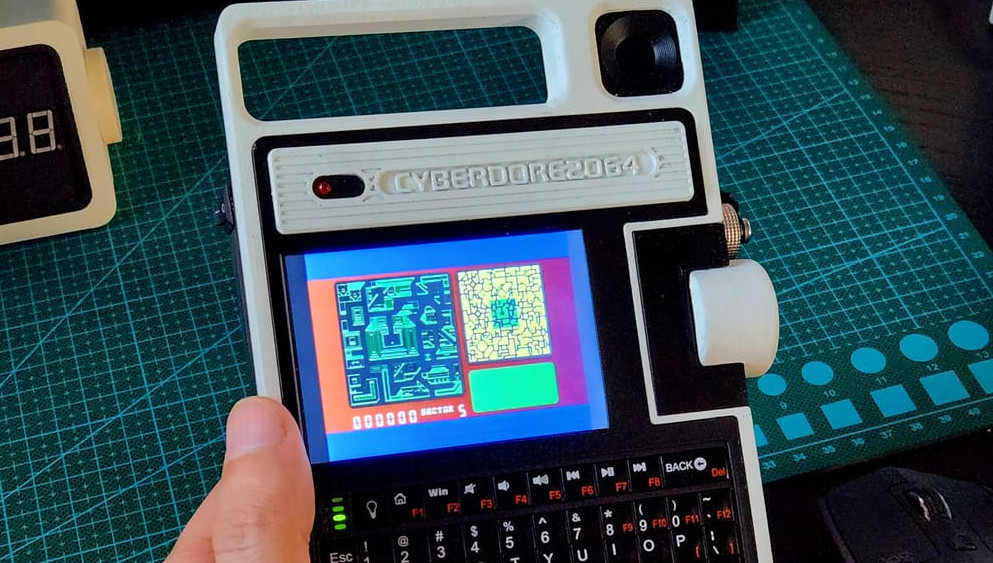Cyberdore 2064 Cyberdeck features an oversized scroll wheel, handle, OLED display, and Raspberry Pi Zero

Using the Raspberry Pi and its ilk to create custom "cyberdecks" is a time-honored tradition in the wider Pi community. On July 18, a self-dubbed "Cyberdore 2064" was posted to Tommi Laukkanen's personal website, Codeof.me. The Cyberdore 2064 cyberdeck project leverages a Raspberry Pi Zero (not the newer Raspberry Pi Zero 2 W), a supplementary Pi Pico, a low-resolution 128x64 pixel OLED display, a built-in keyboard, a custom 3D-printed enclosure, and most interestingly, a KY-040 rotary encoder as a giant scroll wheel.
All these factors combine to create a mostly handheld, super-lightweight PC with a convenient scrolling mechanism, a full keyboard, and a surprisingly clean-looking display, considering its fairly low resolution. Laukkanen says that you won't end up "endless social media scrolling" with this device, though the scroll wheel may still be favorable to Mastodon users who don't mind working with the hardware's limitations.
One of the more interesting facets of this custom Cyberdeck project is that you can recreate it without too much difficulty. Besides the original blog posting listing all of the original hardware and cabling used to make it function, all the pieces that make up the enclosure can be 3D printed, and the models are available on Printables.com for other users to download should they wish to duplicate or alter the design. All you need is one of the best budget 3D printers and you too can have your own version.
Truthfully, the Cyberdore 2064 is far from the most potent cyberdeck of its kind that we've seen. We covered a full Raspberry Pi 5 cyberdeck earlier this year, and there have even been cyberdecks made with Intel laptop CPUs in the past, like one with a circular AMOLED display powered by a Framework mainboard. While the Cyberdore 2064 is more specialized than either of these examples, it's still a fascinating piece of kit, particularly for its ease of use and slick retro aesthetic. We love the Commodore influenced power LED indicator by the way.
Considering the Cyberdore 2064's obvious limitations, the main downside would have to be a 5-pin connector that doesn't do anything besides serve as a flashy prop. According to Laukkanen, this was meant to be a full USB port, but that dream was not realized at the time of posting. Phrasing implies that a USB port could be added in a future revision, though, which should be nice for miscellaneous input or storage needs.
Get Tom's Hardware's best news and in-depth reviews, straight to your inbox.

Christopher Harper has been a successful freelance tech writer specializing in PC hardware and gaming since 2015, and ghostwrote for various B2B clients in High School before that. Outside of work, Christopher is best known to friends and rivals as an active competitive player in various eSports (particularly fighting games and arena shooters) and a purveyor of music ranging from Jimi Hendrix to Killer Mike to the Sonic Adventure 2 soundtrack.